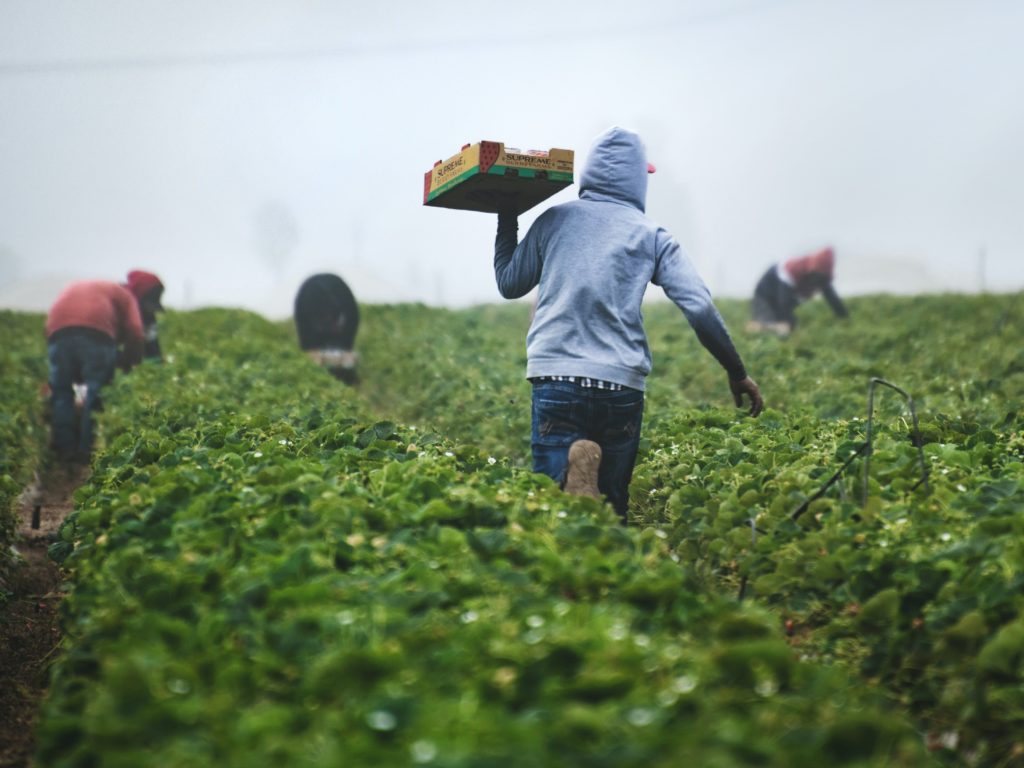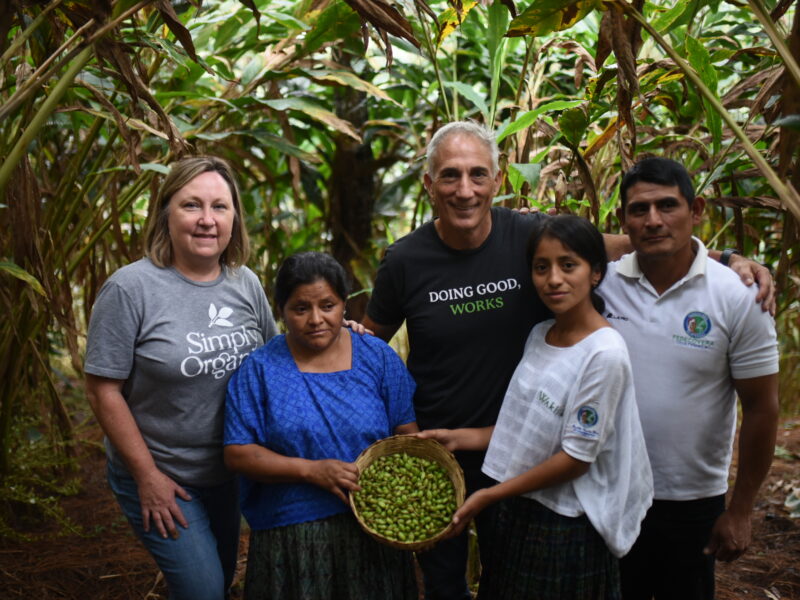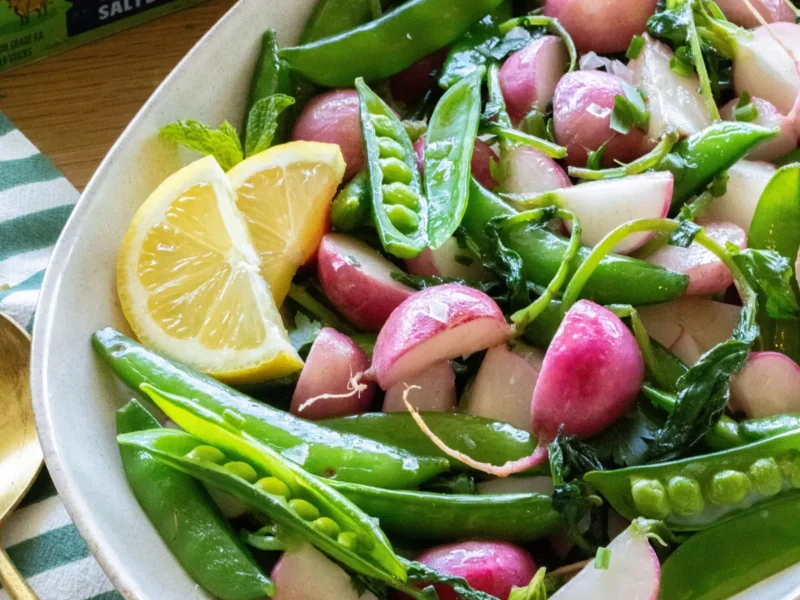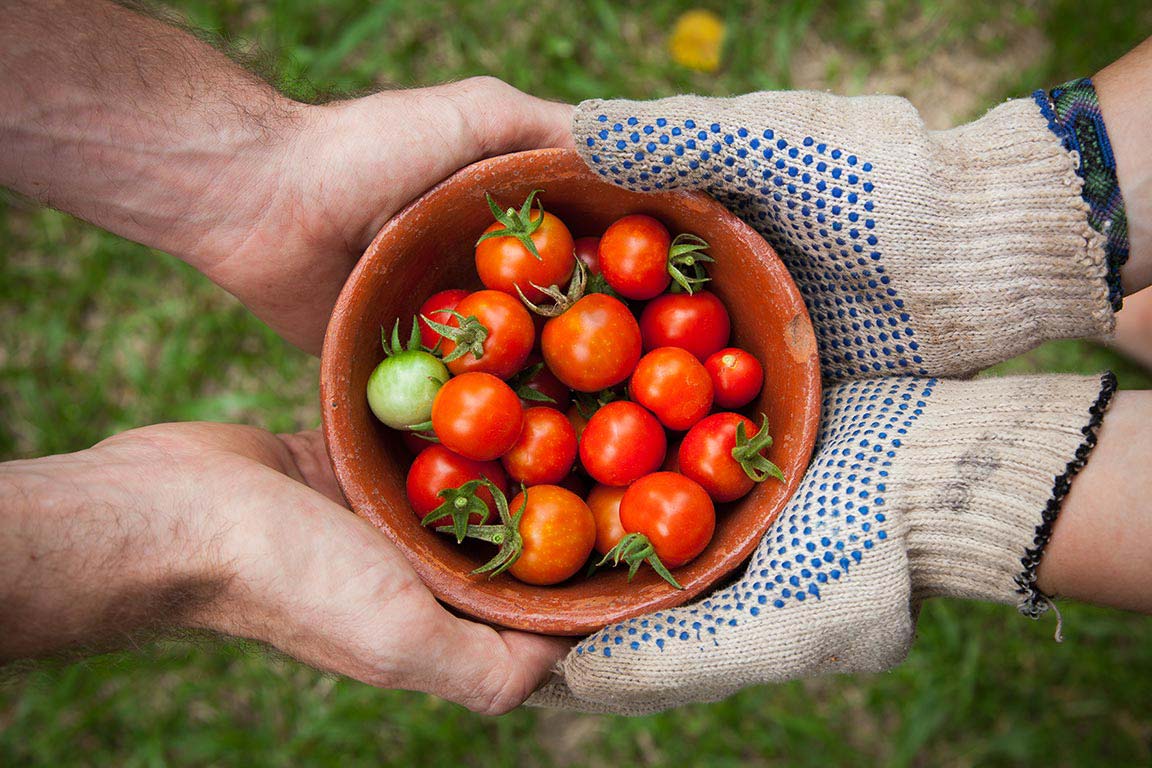Garrett Mussi, is a farmer in California’s San Joaquin Valley where he grows organic corn, squash, tomatoes, cucumbers, garlic and almonds using environmentally friendly methods. He spoke about being a good steward of the rich soil. He described using drip irrigation to conserve water and cover crops to add nitrogen to the soil and compost to enrich it. Learning to farm in an organic way “has been a good experience,” he told me. “It definitely has its challenges, but farming overall is a challenge. I enjoy it. Always learning something new.” The food served at the school system outside San Francisco, Mount Diablo Unified, reflects a trend away from mass-produced, reheated meals. Its lunch menus are filled with California-grown fruits and vegetables, grass-fed meats and recipes that defy the stereotype of inedible school food. As the fine-dining chef at a suburban high school gave samples of his newest recipes, junior Anahi Nava Flores critiqued a baguette sandwich with Toscano salami, organic Monterey Jack, arugula and a scratch-made basil spread: “This pesto aioli is good!” American consumers have been buying more organic foods than ever before. From 2009 to 2019, organic food sales grew 9%, outpacing conventional food sales, which grew only 3% during that period. And in 2020, the organic food sector reached a new high, growing by 13%, with sales totaling $61.9 billion. Pennsylvania invests $1.8 million in organic farming. Already, organic farming is far more popular in Pennsylvania than it once was – or even than it was rather recently: 1,125 certified organic farms are farming 100,000 acres, said Jeff Moyer, CEO of Rodale Institute, a Berks County-based organization that supports organic farming research. He said that represents a 48 percent increase since just 2019. According to a 2019 yearly review by the National Restaurant Association, three-quarters of restaurant owners reported noticeable levels of interest in organic menu offerings compared to those of just two years prior. Interest in organic food isn’t a new trend, but it’s one that is continuing to grow. According to Organica.com, organic vegetables, and fruits make up 14.6% of the total produce sold in the United States, and 5.7% of food sold in America is organic. The global organic food and beverage market tipped $187 billion in 2020 and is estimated to reach $860 billion by 2031 with the rising awareness and demand among consumers regarding health benefits. By 2026, the organic market is expected to reach $620 billion.
America’s Favorite Organic Foods That Aren’t Fresh Fruits or Vegetables
American consumers have been buying more organic foods than ever before. From 2009 to 2019, organic food sales grew 9%, outpacing conventional food sales, which grew only 3% during that period. And in 2020, the organic food sector reached a new high, growing by 13%, with sales totaling $61.9 billion. https://247wallst.com/special-report/2023/02/08/americas-favorite-organic-foods-that-arent-fresh-fruits-or-vegetables/
Pennsylvania invests $1.8 million in organic farming
Already, organic farming is far more popular in Pennsylvania than it once was – or even than it was rather recently: 1,125 certified organic farms are farming 100,000 acres, said Jeff Moyer, CEO of Rodale Institute, a Berks County-based organization that supports organic farming research. He said that represents a 48 percent increase since just 2019.
https://www.cbsnews.com/pittsburgh/news/pennsylvania-invests-1-8-million-in-organic-farming/
Making Farms Organic Is Paying Off
Garrett Mussi, is a farmer in California’s San Joaquin Valley where he grows organic corn, squash, tomatoes, cucumbers, garlic and almonds using environmentally friendly methods. He spoke about being a good steward of the rich soil. He described using drip irrigation to conserve water and cover crops to add nitrogen to the soil and compost to enrich it. Learning to farm in an organic way “has been a good experience,” he told me. “It definitely has its challenges, but farming overall is a challenge. I enjoy it. Always learning something new.”
https://dnyuz.com/2023/01/27/making-farms-organic-is-paying-off/
No more nuggets? Schools are upgrading their cafeteria menus with local organic produce
The food served at the school system outside San Francisco, Mount Diablo Unified, reflects a trend away from mass-produced, reheated meals. Its lunch menus are filled with California-grown fruits and vegetables, grass-fed meats and recipes that defy the stereotype of inedible school food. As the fine-dining chef at a suburban high school gave samples of his newest recipes, junior Anahi Nava Flores critiqued a baguette sandwich with Toscano salami, organic Monterey Jack, arugula and a scratch-made basil spread: “This pesto aioli is good!”
Organic food options on the rise in Oklahoma
According to a 2019 yearly review by the National Restaurant Association, three-quarters of restaurant owners reported noticeable levels of interest in organic menu offerings compared to those of just two years prior. Interest in organic food isn’t a new trend, but it’s one that is continuing to grow. According to Organica.com, organic vegetables and fruits make up 14.6% of the total produce sold in the United States, and 5.7% of food sold in America is organic. The global organic food and beverage market tipped $187 billion in 2020 and is estimated to reach $860 billion by 2031 with the rising awareness and demand among the consumers regarding the health benefits. By 2026, the organic market is expected to reach $620 billion.
https://journalrecord.com/2023/02/09/organic-food-options-on-the-rise-in-oklahoma/









